Is Blendle the Savior of Traditional Media?
Ever since we invited Alexander Klöpping to our company’s conference as a keynote speaker I have been following his endeavors. He’s a busy fellow and does some amazing stuff. He’s created the University of the Netherlands, a televised series of lectures rich in media by renowned professors. And he created a startup that is shaking up old media.
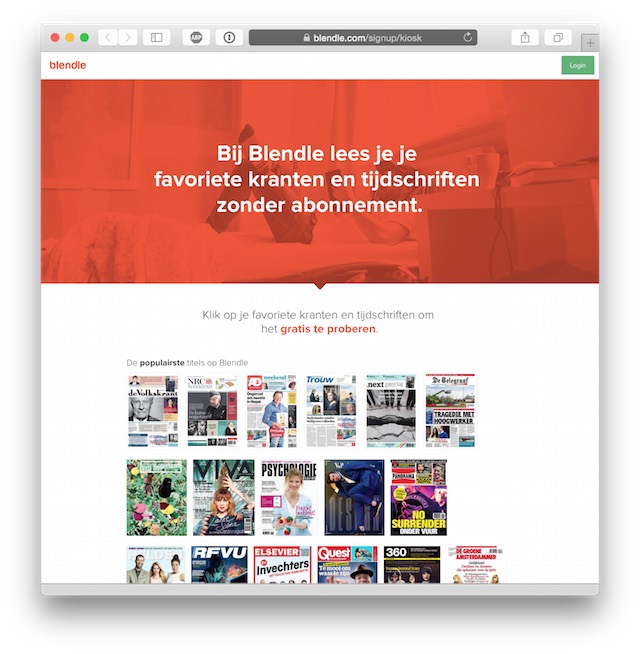
Blendle strives to revolutionize the way you consume news using micropayments in a sensible way. Blendle has contracted with several traditional newspapers and magazines (mostly in the Netherlands and Belgium), and is now increasing its reach across the atlantic ocean with content from the Wall Street Journal and the New York Times.
The idea is that you can read an article for a small amount of money–a micro-payment. So one article could set you back €0.19 and another €0.59. The price depends on the publisher, the content and demand.
Curated content combined with technology
The site features a lot of curated content and automated trending content. Of course any article you read is accompanied by a list of related articles.
Blendle’s setup wizard lets you create your own curated list of publications. The publications you have selected will be featured in a section called “My Blendle” and will list the most popular articles. You can also select categories that will form the top menu bar and the site will select the trending and popular articles for each category:

For example I picked “Tech”, “Big Interviews”, “Foreign”, “Science”, “Media” and “Education” as my categories, as shown in the prior image.
When you want “Share on the Interwebs” Blendle has you covered, allowing you to share links to articles through social media (Twitter, Facebook and LinkedIn), the platform itself or through email.
Engage more with the daily newsletters
You’ll recieve a curated list of articles of all morning editions in your inbox. You’ll also receive a message when a new issue of a magazine is published, and one message at the end of the week with an overview of the most important and popular articles.
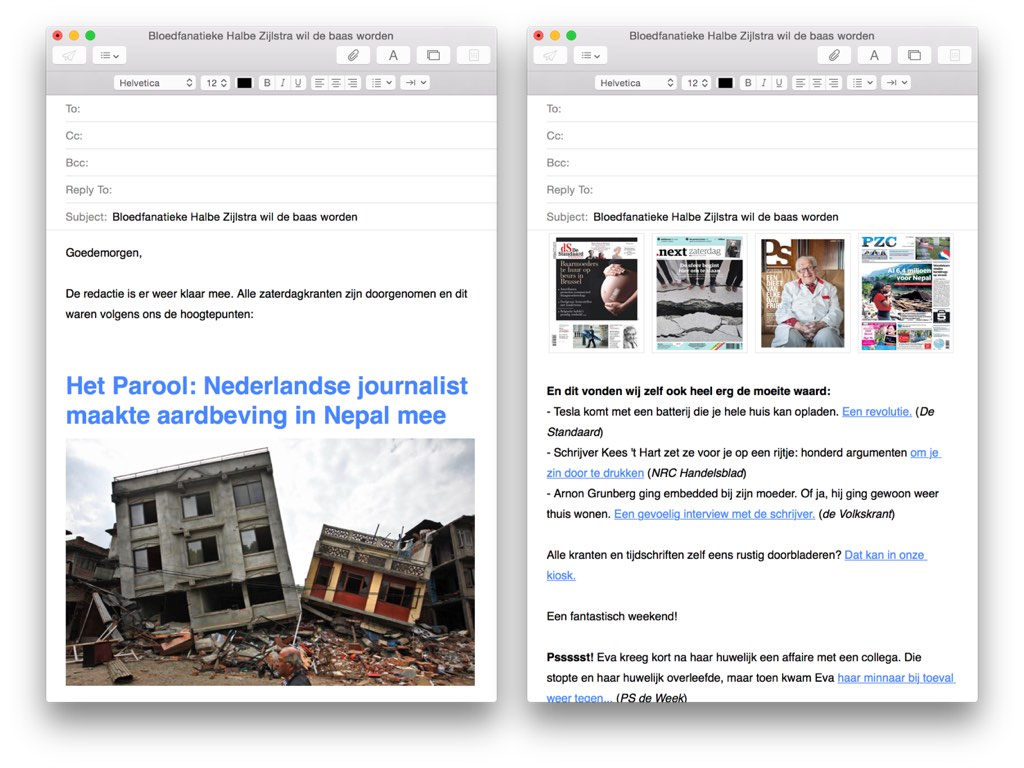
Of course you can opt out of these messages with a familiar “Recieve too much mail from us? Click here to unsubscribe of this daily newsletter”. The preferences page on their site has several options for customizing your need to stay informed.
Each daily message ends with a nice “Psst, this is also noteworthy” suggestion for some tongue in cheek content, making the newsletter bit more entertaining. For example:
Pssssssst! Eva had an affair with a co-worker just after getting married. The affair stopped and her marriage was saved, but then Eva ran into her co-worker by chance
Of course this is click bait, but the Blende team appears to use it as a form of satire rather than a monetization strategy.
Readers can have their cake and eat it too
The platform is thought through very well: when you are already a subscriber to a participating newspaper you get all their articles for free on blendle–you already paid for them. You still get access to all other articles from other publishers, and there’s no risk of paying for an article twice.
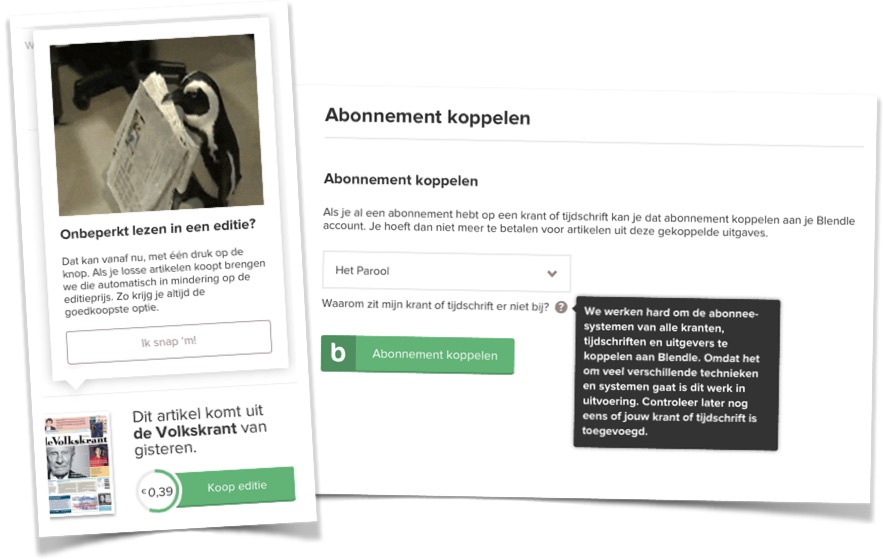
When you read an article you can get the whole issue where it appeared in (e.g. the saturday newspaper) at a discount: the amount you already spent on the articles of that issue. While I haven’t tried it, it wouldn’t surprise me that when you buy enough articles to offset the cost of the complete issue, it unlocks the issue automatically.
Satisfaction guarantee or your money back
When you read an article but don’t like it, or the price doesn’t fit the article in your opinion, Blendle will gladly refund you. You’re only asked a simple question: why you want your money back. Blendle provides you with a list of prepared answers, or provide your own feedback for the author and publisher.
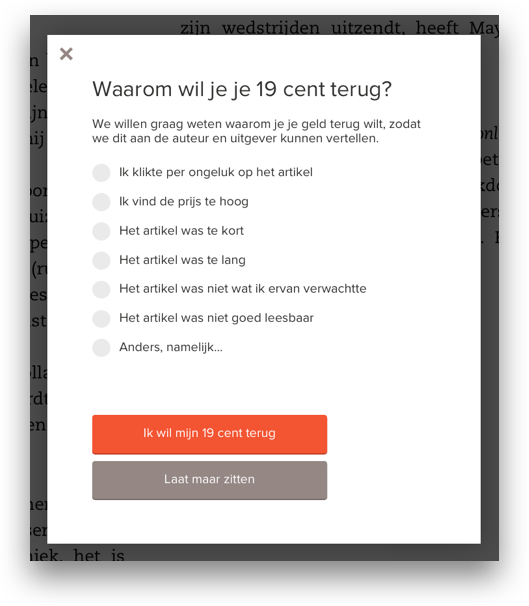
The ease of getting a refund makes it risk free for clicking on articles. The price of newspaper articles is low enough to ignore the cost and are pretty much on par what you’d want to pay. Articles from magazines (looking at you Viva) are often priced too high in my short experience with the platform.
Trending news on your mobile
Blendle also released an app for mobile called “Blendle Trending”. It currently only shows the curated list of trending articles, and your reading list. It was launched as a single day public beta on the App Store for iOS. The app works, but is very limited in its use when compared to the web site. I expect the app to become the major interaction vector for Blendle really soon.
Awesome design
The design of the website (and app) is gorgeous. The articles look good, are nicely typesetted using good readable fonts not unlike the original publication’s type face. In fact the website loads about 45 different type faces in multiple weights.
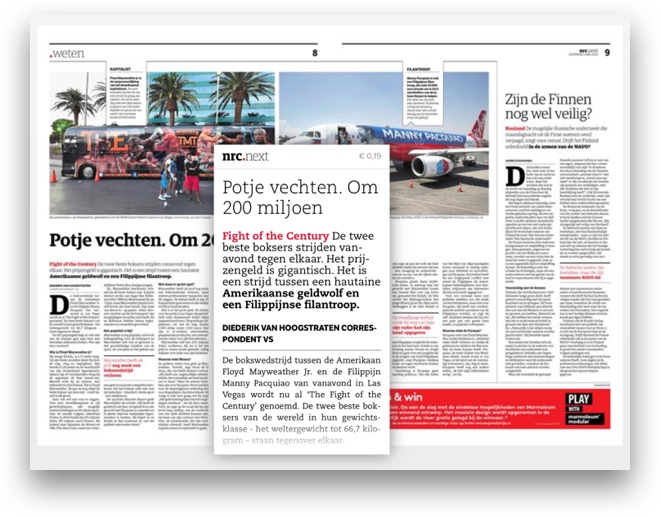
The user experience is great too. The tone of voice is familiar, friendly. It might be a bit too familiar for some folks, but it didn’t bother me. As the site is aimed at the 20 something crowd I think they hit the sweet spot.
Conclusion
The Blendle team has created a really interesting platform for the future of publications, enticing youngsters to read background articles that were previously hidden inside old media. Who has time to read magazines, news papers and other publications in our age of 140 character snippets? Who even has time to read 140 character snippets when a couple of 😜🎓✈️ will do?
Blendle has crafted a great experience to entice not only the youngsters but also the old media. Springer and the New York Times are on board as investors and have their publications available through the site. The team has grown from 3 to 40 in a very short time and is one of the Netherlands’ most successful start ups.
I’m just a recent user of Blendle, but I’ll keep checking their site and application for more interesting news every day, consuming it a micropayment at a time.